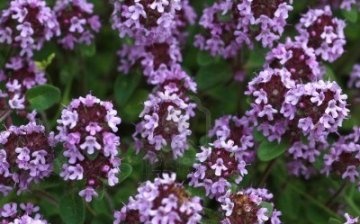Growing thyme
Thyme or thyme belongs to a large genus of the Lipocephalus family. There are almost 350 species in this family. Almost all types of thyme are considered to be scented perennial dwarf shrubs that have woody, leafless stems. On these stems, flower-bearing young shoots with leaves rise by 20-40 cm. Thyme leaves are small and oblong-pointed. Lilac or white flowers grow in the axils of the leaves. The flowering of this plant lasts from May to August. Thyme is usually grown in natural conditions.
Growing thyme primarily contributes to the seasoning. Also this plant is grown as an ornamental plant - it is used to decorate gardens and flower beds. Thyme is often used to produce essential oils.
Thyme is considered a light-loving and drought-resistant plant that takes root very well on light and non-acidic soils, it tolerates wintering well enough when there is a dense layer of snow outside.
If grown in a garden, thyme should be planted in sunny areas that are well protected from the sun. The plant is quite decorative, so it is often used for landscaping.
Thyme is often used in medicine - extracts, syrups, medicinal teas and decoctions are prepared from it. Thyme essential oil is used for the preparation of various preparations; it is added to medical soaps, toothpastes, and cough medicines.
This plant has a fragrant, spicy smell and a bitter, pungent taste, so thyme leaves are often used as a seasoning in cooking. And it is very popular in European cuisine.



